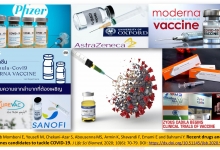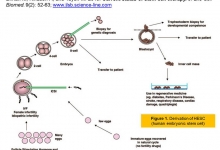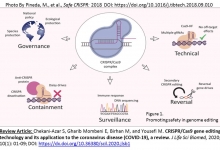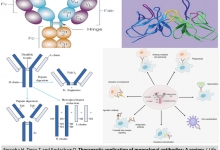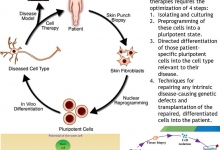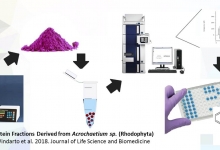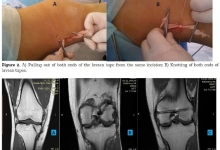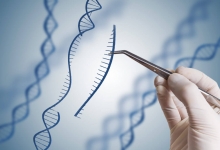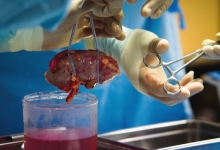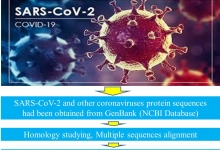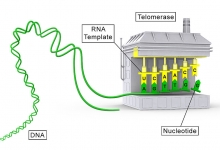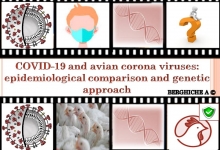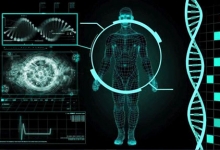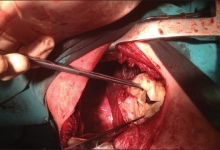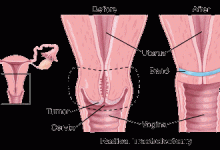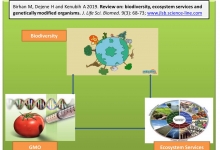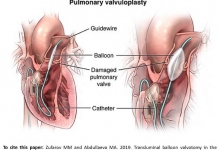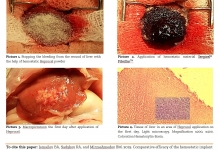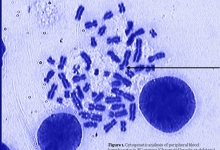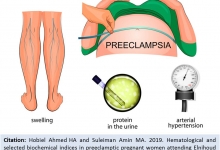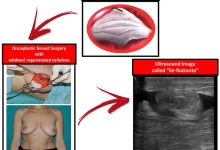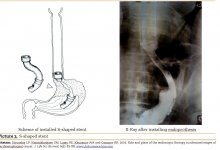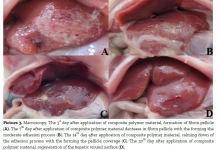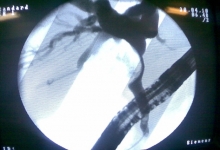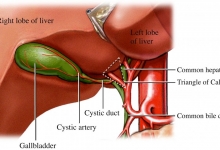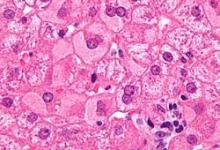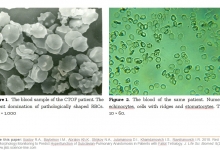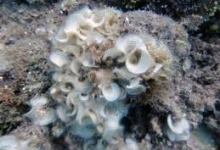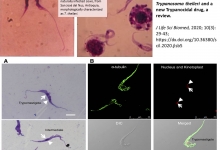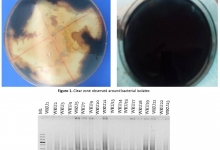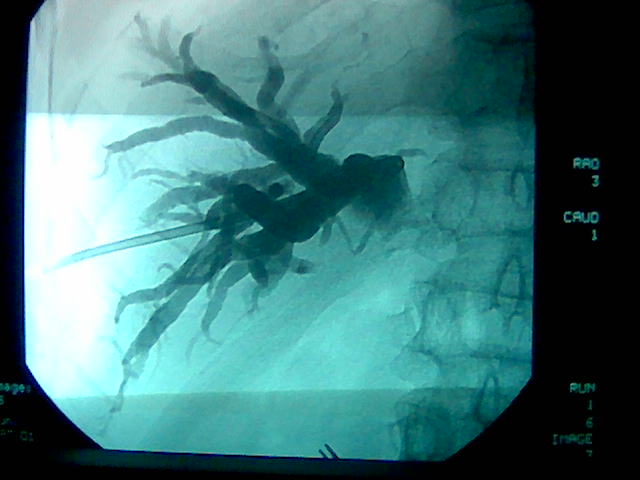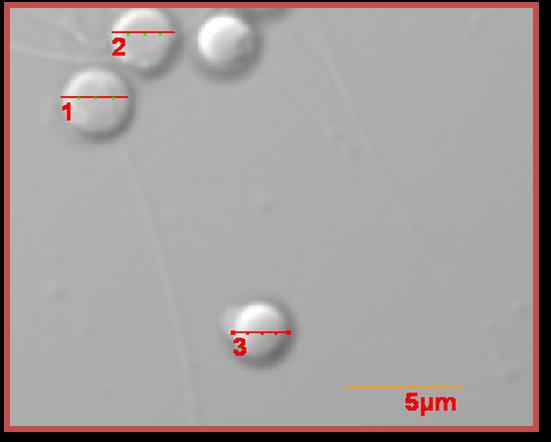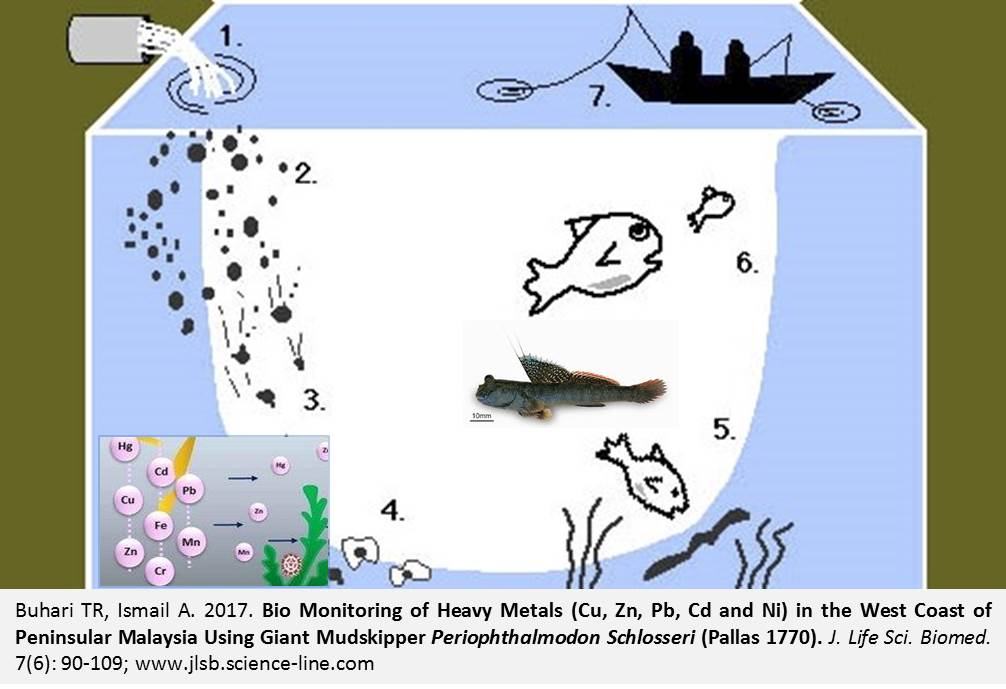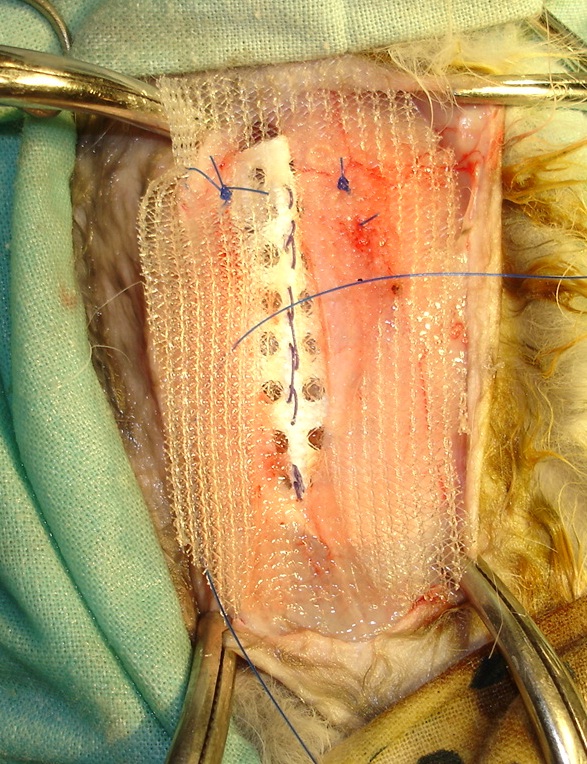Previous issue | Next issue | Archive
Volume 7 (6); November 25, 2017 [Booklet]
Rational Surgical Tactics in Proximal Bile Ducts Tumors.
Nazirov FG, Akbarov MM, Omonov OA.
J. Life Sci. Biomed., 7(6): 76-81, 2017; pii:S225199391700012-7
Abstract
This study aimed to evaluate the experience of surgical management of 156 patients with tumors of proximal parts of bile ducts. Palliative surgical interventions were performed in 125 patients. Recanalization of the tumor with external drainage of bile ducts was performed in the 61 cases. Palliative resection of billiary ducts and biliodigestive anastomosis formation was performed in 17 patients. Transcutaneous transhepatic cholangiostomy (TTCS) as a final method of treatment was performed in 33 case, and in the 14 cases we have carried out endoprosthesis placement in the stricture caused by tumor through TTCS. The radical and conditional-radical surgical interventions were performed in the 31 patients. The 19 patients have undergone the cholecystectomy, resection of hepaticocholedoch with the tumor and placement of hepatojejunoanastomosis, and in 12 cases were performed resection of hepaticocholedoch with liver resection, placement of hepaticcojejunoanastomosis. Postoperative mortality constituted 10.2%. We studied long-term results of surgical treatment of TPBD. The recurrences of disease were noted at follow-up period from 5 months to 5 years. After operation having relatively-radical character, recurrence occurred in the period from 5 months to 12 months after radical operations – from one year to 5 years. Survival was calculated with method of multiplicand evaluations of Kaplan-Meier. Survival after radical surgeries was achieved 1 years in 94% of patients, 2 years – 82%, 3 years – 45%, 4 years – 15% and 5 years – 12%. At I and II types of tumor by Bismuth-Corlette at the I-II stages of the cancer of proximal bile ducts it would be rationally to perform radical surgical treatment with preliminary decompression of the intrahepatic bile ducts.
Keywords: Klatskin tumor, Mechanical jaundice, Transcutaneous transhepatic endobiliary intervention, Radical surgical interventions
The Effect of Different Electric Field Strength (V/Cm) on Post-Electroporated Quality of Koi Fish Sperms.
Soeprijanto A, Faqih AR, Anitasari S.
J. Life Sci. Biomed., 7(6): 82-89, 2017; pii:S225199391700013-7
Abstract
This research was to understand the effect of different electric field strength on sperm quality of Koi fish and to identify the best electric field. Various electric field strengths were treated at range of 10, 20, 30, 40 and 50 V/Cm in form of square wave using electroporator Gen Pulser of BIO RAD. The length of shock was 0.5 ms with shock frequency of 4 times. The result showed The highest and lowest parameter tests of treatment Koi fish could be explained as following. (1) The highest motility was 77 % and found at electric field strength 10 V/Cm, and whereas the lowest motility was 58 % obtained from electric field strength 50 V/Cm. (2) The highest viability of Koi fish sperms was 80 % obtained from treatment with electric field strength 10 V/Cm, while the lowest viability was 59 % found at electric field strength 50 V/Cm (3). The highest fertility was 70 % acquired from electric field strength 10 V/Cm whereas the lowest fertility was 51% derived from electric field strength 50 V/Cm. It was suggested from this research that to obtain better motility and viability rates, electric field strength 10 V/Cm should be considered.
Keywords: Electric Field, Sperm Quality, Square Wave, Motility, Viability, Fertility
Bio Monitoring of Heavy Metals (Cu, Zn, Pb, Cd and Ni) in the West Coast of Peninsular Malaysia Using Giant Mudskipper Periophthalmodon Schlosseri (Pallas 1770).
Buhari TR, Ismail A.
J. Life Sci. Biomed., 7(6): 90-109, 2017; pii:S225199391700014-7
Abstract
The giant mudskipper Periophthalmodon schlosseri (Pallas 1770) is the largest notable species of Malaysian mudskippers and invariable the best known example of resident intertidal fish. This paper present an assessment of heavy metals concentration; Cu, Zn, Pb, Cd and Ni in scales, muscle, bone, gills, operculum, intestine, liver and cartilage of Periophthalmodon schlosseri (P. schlosseri) with aim of proposing it as a biomonitoring agent in the coastal mudflats. The giant mudskippers; P. schlosseri were collected from six sampling sites in the west coast of Peninsular Malaysia and analyzed for heavy metals concentrations; Cu, Zn, Pb, Cd and Ni in scales, muscle, bone, gills, operculum, intestine, liver and cartilage by using an air-acetylene flame atomic absorption spectrophotometer, Perkin Elmer Analyst 800. The levels of heavy metals concentrations in the tissues of P. schlosseri varied significantly (P > 0.05). The studied metals showed different accumulation target in the fish; Cu was observed highest in liver while Zn, Pb, Cd and Ni exhibited their highest concentrations in cartilage. The pattern of metal accumulation was in the order: Zn > Pb > Ni > Cu > Cd, with a similar pattern observed for metal selectivity index (MSI %) value. There was no unique ranking with regards to tissue selectivity index (TSI %) among the tissues, except liver which showed high copper selectivity at all the six sampling sites. However, the result of biota-sediment accumulation factor (BSAF) for Cu and Zn were highest in liver and intestine respectively while the BSAF for Pb, Cd and Ni were highest in cartilage. Results of the present study indicate bioaccumulation of the studied metals in the tissues of giant mudskipper P. schlosseri which might suggest it use as a potential bio monitoring agent for heavy metals in the west coast of Peninsular Malaysia.
Keywords: Bio monitoring, Heavy metals, Periophthalmodon schlosseri, West coast Peninsular Malaysia.
Two-Component Mesh Repair of Medium-Sized Ventral Hernias.
Ametov LZ, Baibekov IM, Khan GV, SHayusupov AR, Egamov BYu.
J. Life Sci. Biomed., 7(6): 110-116, 2017; pii:S225199391700015-7
Abstract
In order to reduce the frequency of adhesions which are accompanying hernial repair procedure, various types of combined prostheses are offered. At the same time many researchers are still searching for a more profitable combination of synthetic materials. Experimental studies were performed on 8 rabbits. Animal weight was varying from 2.2 to 3 kg. General endotracheal anesthesia was performed. We developed a two-component prosthesis model consisting of two layers, firs layer (lower) was a polytetrafluoroethylene (PTFE) and was placed in the abdominal cavity and the second (upper) was a prolene layer and located above the muscular aponeurosis of the anterior abdominal wall. The absence of adhesions of the visceral peritoneum after establishing PTFE prosthesis was determined by a macroscopic method. On the 10th day, the formation of a thin capsule covering the lower prosthesis was visually observed. Morphological studies have shown that the use of a two-component prosthesis does not affect the course of the wound regeneration process and the wound healing time, the upper polypropylene film is integrated with the surrounding tissues and neovascularization is observed already by the 14th day.
Keywords: Ventral hernia, Synthetic PTFE prosthesis, Two-component mesh for ventral hernia repair, Intraperitoneal prosthesis, Intra-abdominal prosthesis adhesions.

